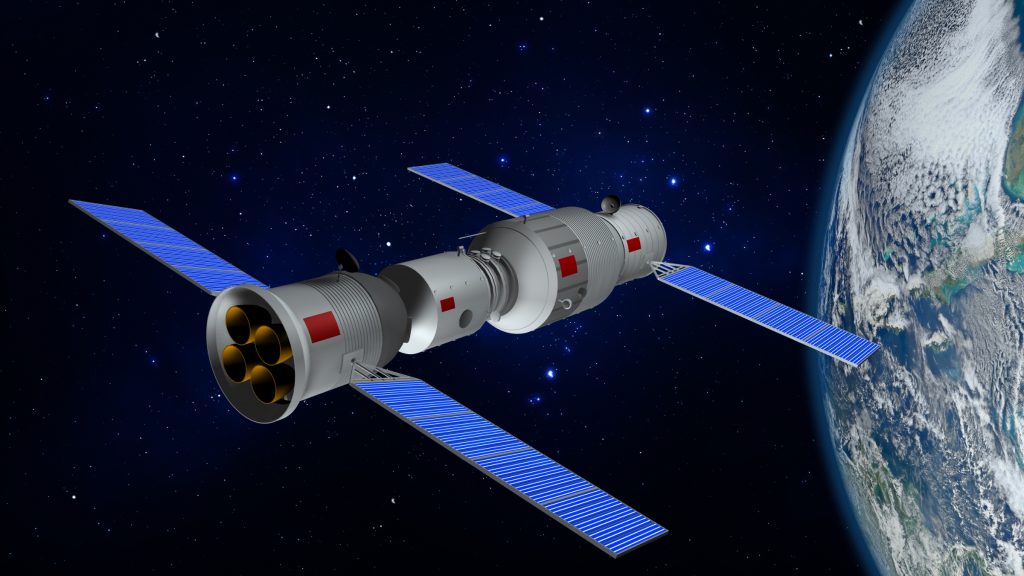
Chinese researchers announced in June a satellite that uses a low-power, 2-watt laser to achieve a record data transmission speed of 1 gigabit per second from 36,000 kilometers away, outpacing Starlink’s real-world speeds. Experts say, that the Chinese satellite pulverizes Starlink with accelerating ambitions to rival US dominance in space technology.
Beijing’s summer announcement set the first stone in new advancement escalation, militarized space race with the intent to pulverize its rival’s edge with superior efficiency.
From 36,000 kilometers above Earth, the Chinese satellite laser ranging delivered a 1 gigabit per second (Gbps) downlink speed, a record breaking achievement that surpasses Starlink’s real world rates of 100 to 250 Mbps.
Led by Professor Wu Jian and Liu Chao, the project used an AO-MDR synergy method to stabilize the laser signal against atmospheric distortion.
China perceives Starlink’s vast constellation as a national security threat, this leap proves that alternative, high-efficiency communication methods are feasible. With this in motion, China’s accelerating its own satellite constellation plans to launch tens of thousands of satellites to compete Starlink’s global, and military, reach.
The satellite laser communication breakthrough project, led by Professor Wu Jian of Peking University and Liu Chao of the Chinese Academy of Sciences, employed a method known as AO-MDR synergy, which stabilizes laser signals against distortions caused by atmospheric turbulence.
“The test used only a 2-watt beam,” the team reported in Acta Optica Sinica, “orders of magnitude less than conventional optical systems.” Yet the results, published in June, signal not only a scientific triumph but also a strategic leap for China in an increasingly militarized race for space supremacy.
Starlink’s Laser satellite communication Dominance and Global Unease
Since its beginning in 2019, SpaceX’s Starlink has grown into the world’s largest satellite network, operating over 8,000 satellites about two thirds of all active satellites orbiting Earth, its fast growth has brought high speed internet to more than 140 countries, including Vietnam, Pakistan, and the Democratic Republic of Congo.
“As the United States integrates Starlink technology into military space assets to gain a strategic advantage over its adversaries, other countries increasingly perceive Starlink as a security threat in nuclear, space, and cyber domains,” wrote professors from China’s National University of Defense Technology in a 2023 paper.
That satellite constellation vulnerabilities sense only intensified after Russia’s invasion of Ukraine in 2022, as Starlink played a vital role in Ukrainian battlefield communications. Technology allowed soldiers to coordinate actions and direct drones, illustrating the power of a private company to influence war.
“Ukraine was a warning shot for the rest of us,” said Nitin Pai, co-founder of India’s Takshashila Institution. “Now it’s no different with the Americans.”
Musk’s political entanglements have further complicated satellite constellation vulnerabilities matters. His personal ties to US defense agencies and shifting political loyalties have contributed to worries about having the Chinese satellite pulverizes Starlink and concentrating power in a privately owned network.
SpaceX’s owner, Starlink, continues to secure billions of dollars’ worth of US government contracts for military and intelligence operations, reinforcing China Starlink competitor perceptions of its dual civilian military mission.
China Starlink Equivalent but In Response
Beijing views Starlink satellite constellation vulnerabilities as a formidable security threat. Dozens of Chinese papers have explored countermeasures, including using minuscule telescopes to monitor Starlink satellites and deploying lasers that can disable them.
Even People’s Liberation Army engineers have proposed launching satellites that would “tail” the Starlink network, capturing intelligence or disrupting its operation.
And while Beijing has criticized Starlink, it is also accelerating the development of satellite constellations of its own. The state-owned China SatNet company has already launched 60 of a planned 13,000 satellites under its Guowang project, while Shanghai backed Qianfan has put 90 of 15,000 planned satellites into orbit. These initiatives aim not only to provide global coverage but also to rival Starlink’s commercial and military reach.
“The Starlink constellation coverage capacity of all regions in the world is improving steadily and in high speed,” Chinese researchers concluded in one study, warning that Musk’s satellites can achieve “round-the-clock coverage of Beijing.”
As geopolitical tensions extend into orbit, China laser satellite new 2-watt breakthrough may signal more than just scientific progress it could mark the dawn of a new phase in the global space race.
The satellite internet constellation achievement shows that “alternative methods to Starlink are possible,” as the researchers stated, suggesting that the Chinese satellite pulverizes Starlink for space dominance is no longer just about who can reach the stars first, but who can communicate faster once they get there.
Inside Telecom provides you with an extensive list of content covering all aspects of the tech industry. Keep an eye on our Tech sections to stay informed and up-to-date with our daily articles.